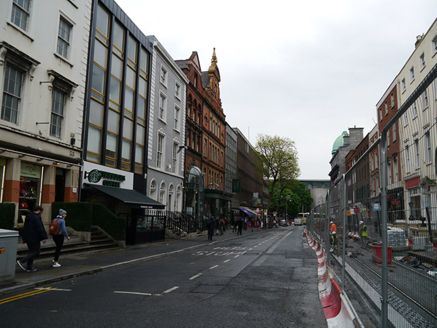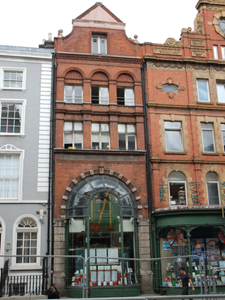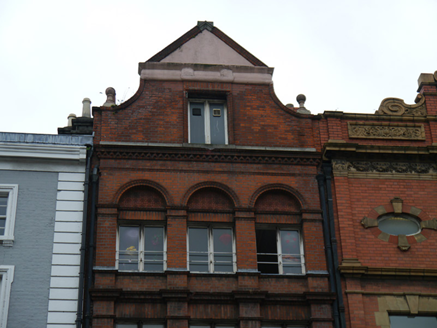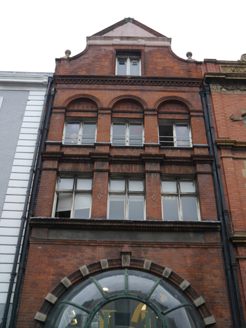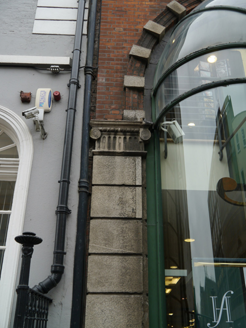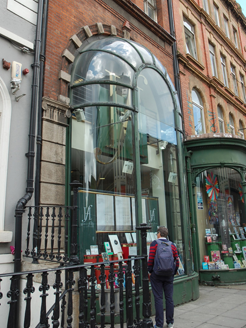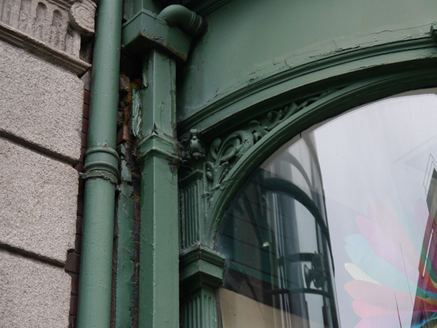Survey Data
Reg No
50100028
Rating
Regional
Categories of Special Interest
Architectural, Artistic, Technical
Previous Name
Millar & Beatty / Browne & Nolan
Original Use
Shop/retail outlet
In Use As
Shop/retail outlet
Date
1890 - 1905
Coordinates
316063, 233825
Date Recorded
11/07/2016
Date Updated
--/--/--
Description
Attached three-storey gable-fronted commercial building, built 1894-1900, having wide single-bay double-height ground floor, three-bay middle floors and single-bay attic, and abutted to rear. Now amalgamated with adjoining building (Nos. 57-58). Pitched slate roof, having profiled Dutch-style pedimented parapet with ball finials, gauged and cogged brick cornice, and tympanum with moulded brick raking courses. Replacement aluminium downpipes. Flemish bond red brick walling to front and rear elevations and to visible part of south elevation; front having moulded gauged brick sill courses to first floor and attic floor, latter having decorative cogging; and with pilasters to each end of rear elevation. Square-headed window openings to upper floors, middle floor openings being set within round-headed double-height recesses, each having moulded archivolt and decorative terracotta tile-work to tympanum, atop pilasters, latter having moulded imposts to each floor, and with moulded stringcourse between floors. Soldier course lintels to middle floors; attic window having moulded brick architrave. Timber side-hung casement windows. Shopfront has elliptical-headed display window, infilled with later (c. 1980) convex timber window made in sections, with alternating stone and gauged brick archivolt, low stall-riser, and banded reconstituted stone pilasters to each side to impost level with fluted Ionic capitals. Plot to rear fully developed.
Appraisal
No. 56 Dawson Street was built about in the final years of the nineteenth century to designs by Thomas Manly Deane, the youngest of the architectural dynasty that included his father, Thomas Newenham Deane and grandfather Thomas Deane. Thomas Manly Deane is best known for the National Library and National Museum, illustrating his confidence in the language of classicism. Classical devices and detailing are employed effectively at No. 56 to provide an element of balance to what is a rather tall, narrow building with a tall ground floor arch that dominates the façade and features unusual convex glazing constructed in sections. Together with the adjoining Nos. 57-58 of 1902 by A.E. Murray, the building has been the location of historic Dublin bookshop Hodges & Figgis (est. 1768) since the 1980s. It is a worthy contribution to the architectural character and variety of Dawson Street.
